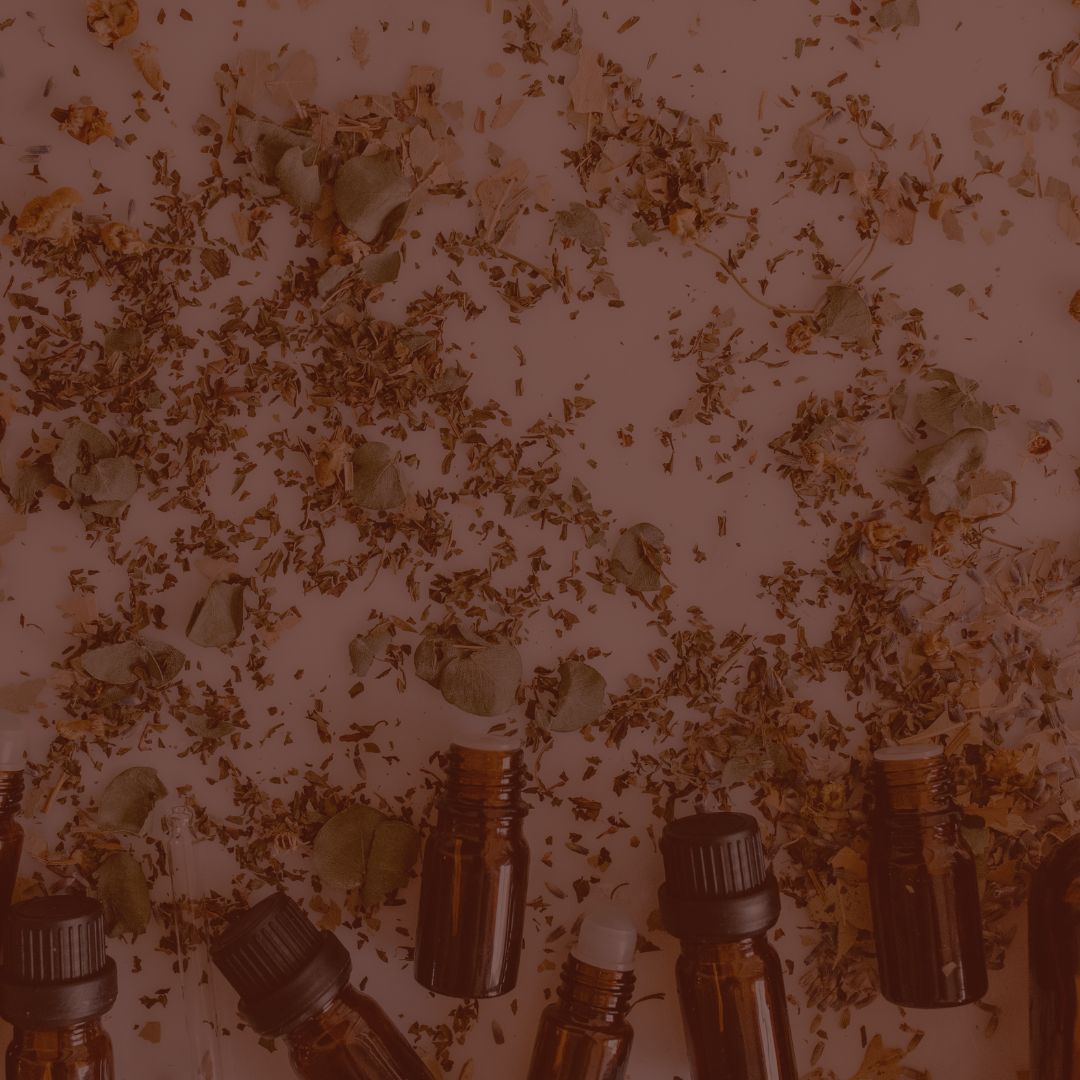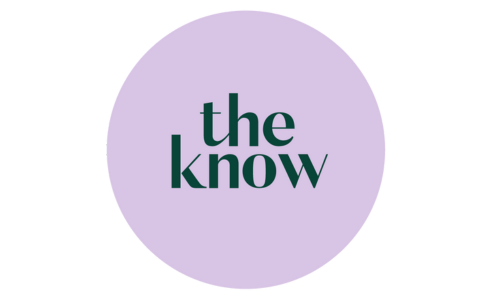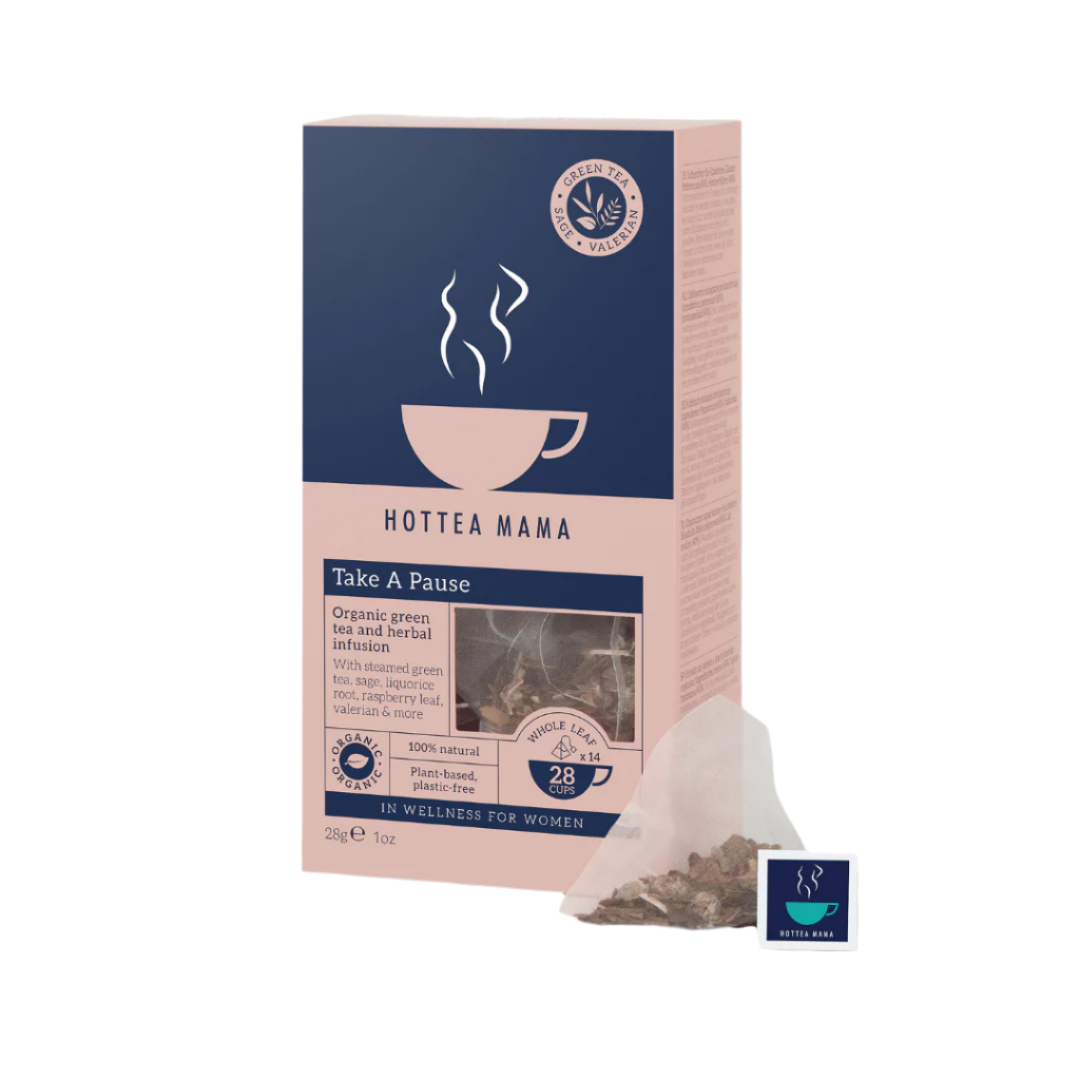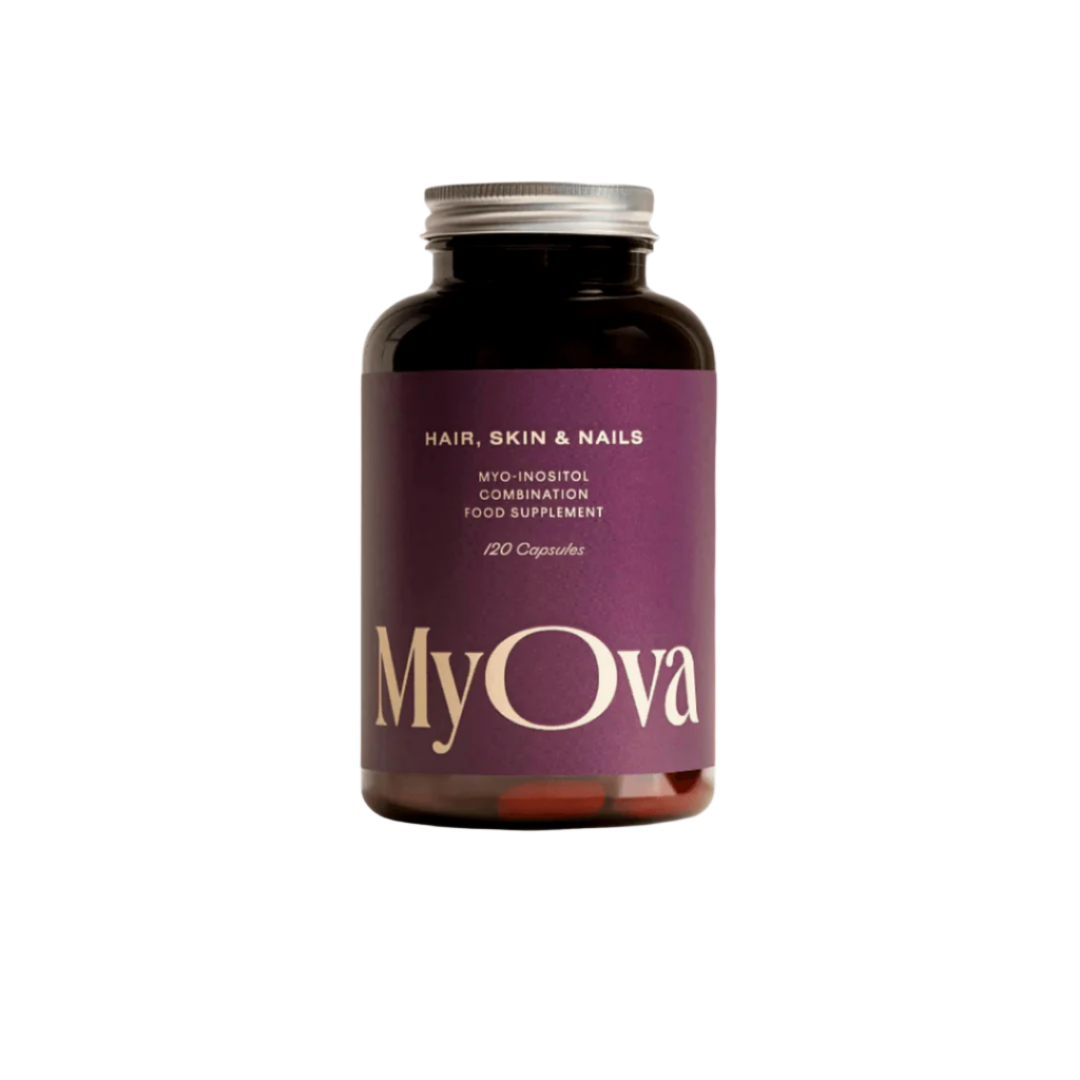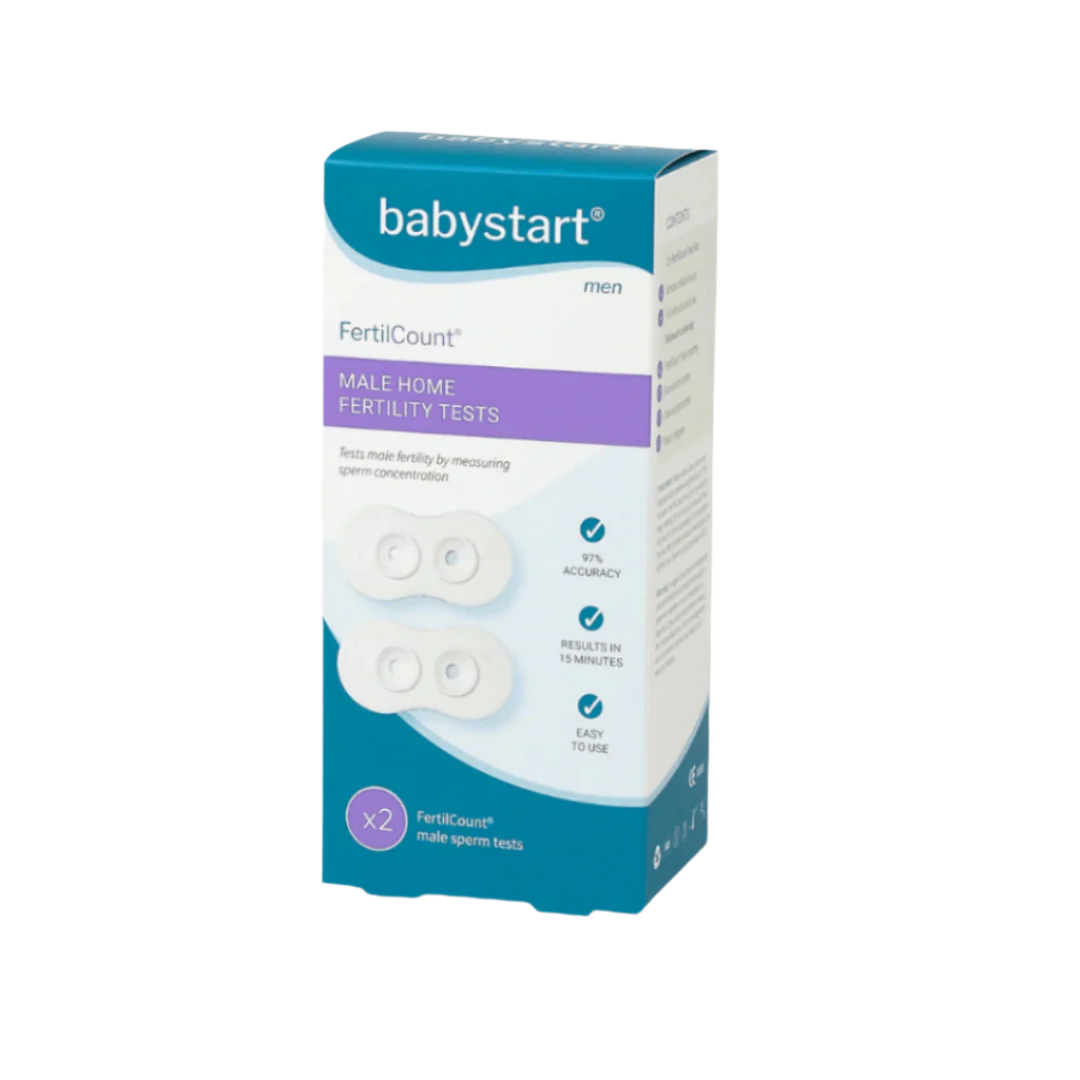The Journal
The Digital Detox Movement: Reclaiming Your Life from Social Media
The digital detox movement advocates for taking intentional breaks from digital devices, particularly from social media platforms. This movement is not about shunning technology entirely but about finding a balance and fostering healthier relationships with our digital lives.
Learn moreEndo-friendly smoothie - approved by femme nutritionists
Elevated inflammation has been identified as a driver of endometriosis and wider immune dysfunction also seems to be involved. Check out this Breakfast Smoothie that is endo friendly! Written by Julie Gough What is Endometriosis? Endometriosis is a condition where tissue similar to the lining of the uterus grows outside the uterus. This tissue, known as endometrial implants, can be found on organs such as the ovaries, fallopian tubes, and pelvic lining. During the menstrual cycle, these implants respond to hormonal changes, causing inflammation, pain, and the formation of scar tissue. Check out this recipe by our Nutritionist, Julie Gough, that has been designed to help nourish the body and support the immune system and reduce the inflammatory response. The typical anti-inflammatory diet emphasises fruits, vegetables, lean protein, nuts, seeds and healthy fats and restricts processed foods, sugar, dairy and gluten. BREAKFAST SMOOTHIE Serves 1: 1 tbsp ground flaxseed 1 tbsp almond butter 1 tsp maca powder 1 tbsp protein powder (wild berry or vanilla) 250ml coconut milk 2 handfuls spinach 1 ripe kiwi fruit, peeled Method: Place all ingredients into a cup blender. Blend until smooth. Best eaten straight away however the ingredients can be packed together the night before for a quick blend in the morning.
Learn moreCelebrating Women's History Month
As March unfolds, so does a vibrant celebration of resilience, courage, and achievement — Women's History Month. It's a time to reflect on the extraordinary contributions of women throughout history and their ongoing journey towards equality and empowerment. This annual observance provides a poignant opportunity to delve into the rich tapestry of women's experiences, from the unsung heroines who shaped communities to the iconic figures who defied norms and shattered glass ceilings. Across the globe, women have left an indelible mark in every sphere of human endeavour. From science, literature, and politics to art, business, and social activism, their influence knows no bounds. Yet, too often, their stories have been relegated to the footnotes of history. Women's History Month serves as a powerful corrective, amplifying their voices and illuminating their legacies. We celebrate visionaries like Marie Curie, whose ground-breaking research in radioactivity earned her two Nobel Prizes, or Rosa Parks, whose act of defiance catalysed the civil rights movement. We honour the resilience of Malala Yousafzai, who continues to advocate for girls' education despite facing adversity, and the tenacity of Amelia Earhart, whose pioneering flights inspired generations of aviators. But Women's History Month is not only about commemorating the past; it's also about galvanising action in the present. It's a call to address persistent inequities and dismantle barriers that hinder women's progress. It's about fostering an inclusive society where every woman and girl can thrive, irrespective of their background or circumstances. In today's world, we see women leading businesses, commanding armies, and spearheading social movements. Yet, we also recognise the unfinished work ahead. Gender disparities persist in areas such as pay equity, representation in leadership roles, and access to healthcare and education. Women continue to face discrimination, violence, and systemic injustices. As we honour the achievements of women past and present, let us recommit ourselves to the pursuit of gender equality. Let us amplify women's voices, challenge stereotypes, and create pathways for advancement. Let us support initiatives that promote women's empowerment and ensure that every girl grows up in a world where her dreams are limitless. This Women's History Month, let's celebrate the courage, resilience, and achievements of women around the world. Let's honour their contributions, learn from their stories, and work together to build a future where gender equality is not just a dream but a reality. After all, when women succeed, societies prosper, and humanity thrives.
Learn moreThe link between mood and food.
This blog discusses how different types of food can affect our mood and well-being. It highlights the link between what we eat and how we feel, noting that processed and refined carbohydrates like white bread and pasta can leave us feeling bloated and low. On the other hand, certain foods can improve our mood by affecting the neurotransmitters in our brain. The key takeaway is the importance of consuming the right nutrients to maintain balanced neurotransmitters and stabilise blood sugar levels, which can positively impact mood. Written by Julie Gough Our bodies respond differently to types of foods in different ways. There is link between what we eat and how we feel. Some foods including processed and refined carbohydrate like white breads and pasta can leave us feeling bloated and also making us feel low; others can actually improve our mood. This is because what we eat can affect the neurotransmitters the brain produces and therefore how we feel. We must feed our brains the right nutrients to produce balanced neurotransmitters to boost our mood. Our blood sugar also impacts our mood, foods high in sugar can cause a sudden increase in blood sugars this is then followed by a quick crash when our body clears the sugar, these sugar lows can impact our mood making us feel low Good Mood Foods Omega-3 and omega-6 fats are found in oily fish (e.g. wild salmon, sardines, trout and mackerel) raw nuts and unsalted nuts and seeds. These fats have been well researched for brain health having a critical role in the structure and function of the brain and therefore can impact mood. The body cannot make these fats, so must be part of the daily diet. Aim to include oily fish in your diet 2-3 times a week and have a handful of nuts and seeds daily as a snack. If you don`t like oily fish then you could take an omega 3 supplement. These contain fibre that can slow down the absorption of sugar into your bloodstream and stabilise blood sugar levels. Complex carbs also contain B vitamins, magnesium and zinc, which are brain-boosting nutrients. Complex carbs include: oats, beans, brown rice, rye bread, pluses and vegetables. This is vital for good brain health and increase release of mood boosting chemicals in the brain as well as helping to maintain blood sugar levels. Aim to include protein into every meal. Good sources include eggs, poultry, seafood, tofu, fish, beans nuts and seeds This is an amino acid (amino acids are the building blocks of protein) which our body converts into serotonin our ‘feel good’ hormone. Foods to include: peanuts, turkey, salmon and eggs. To boost your mood, include these foods in your diet daily. Bad Mood Foods White breads, pasta, cakes, chocolate, fizzy drinks and many high sugar breakfast cereals can cause blood sugar fluctuations increasing the feelings of anxiety leading to a low mood. Too much alcohol and caffeine too frequently can trigger the brain into producing hormones that may increase the feelings of stress and anxiety. Alcohol can also reduce serotonin the “feel good” hormone Found in meat, dairy products and also hydrogenated fats found in processed foods can compete with our good fats blocking them out impacting our mood. They can give you side effects including mood swings, headaches and dizziness. In addition heavy metals can be found in some foods including lead and mercury, which can impact brain health Our gut bacteria play a huge role in our mood and happiness, many factors play a role in producing the gut microbiome including diet, environment, season and health status. When the human microbiome is challenged with changes in diet, stress or antibiotics the physiology of the microbiome changes. The gut microbiome can regulate emotions and 90% of our serotonin (“feel good hormone”) are located in the gut and the most common pharmacological treatment for mood disorders are selective serotonin reuptake inhibitors (SSRIs) which have gastrointestinal side effects.
Learn moreCelebrating your story with Anna Hobson
Drawing from her background in culture and human behaviour, Anna Hobson found her purpose in life coaching after experiencing mental health challenges, including eating disorders and OCD, during a challenging transition in her early thirties. Read on to learn more about self-sabotage. Written by Anna Hobson Hi I’m Anna Hobson and I’m a certified coach with the European Mentoring Coaching Council since 2016 and I’m affiliated with the UK's Association of Executive Coaches. Drawing from my background in culture and human behavior, I found my purpose in life coaching following a challenging transition in my early thirties. Having personally experienced mental health challenges, including eating disorders and OCD, I understand the impact of the "be perfect" mindset on quality of life. I’m passionate about helping others navigate their inner dialogue and self-narrative, particularly empowering women to reach their full potential. "The worst bully you'll ever experience in life, is yourself." As the ‘self love’ movement continues to gain momentum, we can find ourselves in juxtaposition. Are you comfortable with ‘self love’? What exactly does ‘self love’ really mean? Why do I still beat myself up about what I’m not doing, and overlook everything I am doing?! Cut yourself a little bit of slack please! I don’t know about you, but I absolutely am my own worst critic; from the finest of details about my work, my appearance, my behaviours. I critique myself on such a micro level it’s exhausting. We are being encouraged more and more to be kind to ourselves, but for many of us, this isn’t an easy feat. Without wanting to pay lip service to it, the act and habit of self love (I prefer self compassion) takes practice. By just noticing one thing that feels good about yourself, one thing you did well today, or by holding the space that little bit longer in the mirror to really accept your beauty, matters. Warm up your inner dialogue and stop bullying yourself. "Are your people, really your people?" Our family and friends form our largest influence of social connections and are usually the most important relationships in our world. But what if I asked you to notice how you feel when you’ve spent time around them? Have you ever seen those little fridge magnets in your local garden centre with quotes like ‘Friends are the family we choose’? It’s little nudges like this that as I’ve got older, have got me thinking. In my own adult life, when I’ve experienced highs and really tough and challenging lows, if I reflect on those times and I’m honest with myself, the people I thought would always be there, weren’t always there. It’s a hard reality to face into and can feel really quite painful, but it can also equip you to protect your soul, your energy and importantly, your heart. Your people are the ones who should champion you, celebrate you, care for you, be curious about you and your life, show you compassion, accept you, acknowledge your growth – not criticise it…. So I ask you, are your people, really your people? "Today, I choose to wear my own hat!" I don’t know about you, but sometimes I feel as though the weeks fly by and whilst I have the bet intentions to squeeze every opportunity out of every day, I blink and another week has gone! There are many hats we wear; work hat, mum hat, wife hat, girlfriend hat, daughter hat, friend hat, chauffer hat, carer hat, chef hat, pet nanny hat, personal maid hat, fridge filler hat and so on… phew, that’s a LOT of hats and it’s nowhere near all of them. Question…. when do you take some properly selfish time to wear your own hat and show up for yourself? I suspect if you’re really honest, the answer will be rarely. Whatever that looks like, even if it’s a simple bubble bath, candles lit, with the door closed so you have some uninterrupted time, just for you. This is a call to action, for you to take some properly selfish time out. Show up for yourself today - the other hats can wait. I promise.
Learn moreFour Ways You Can Maximise Your Good Mood By Hacking Your Happiness Hormones
Daye says unlocking your happy hormones is the key to enhancing mental health and positive emotions, as revealed in the latest blog. Serotonin, dopamine, oxytocin, and endorphins play a pivotal role in feelings of contentment, relaxation, euphoria, and love. The blog encourages self-reflection on how often these happiness-inducing hormones are activated, offering insights into emotional needs and overall mental well-being. A big thank you to Daye for shedding light on the science of happiness and offering actionable steps to elevate our mood and mental health. Written by Stacey Carter Activating you happy hormones triggers positive emotions that boost your mental health - the trick is knowing how to unlock them. The feelings that we often associate with happiness, such as contentment, relaxation, euphoria, and love and affection, originate from four specific happy hormones that circulate around our body – serotonin, dopamine, oxytocin and endorphins. We can learn a lot about our emotional needs and our mental wellbeing by thinking about how many times we’re activating these specific hormones over the course of a week, or even day to day. You may come to realise that you’re getting ample oxytocin from cuddling your partner, but if you’re not factoring in a daily sunshine walk or eating a diet rich in serotonin-friendly amino acids, you’re likely to be low on those mood-balancing happy hormones. The good news is that boosting your body’s output of these happy hormones is a lot simpler than you might think. For example, you can experience endorphins by doing physical exercise and oxytocin from giving someone you love a big hug. To find out exactly how these hormones work in the body and what we can do to get our daily dose of them, we consulted the experts. What are happy hormones? The key players here are serotonin, endorphins, oxytocin, and dopamine. Each hormone is a neurotransmitter, meaning they relay key messages throughout the body. According to a study from the Neuroscience & Biobehavioral Reviews, these happy hormones are responsible for a whole host of different functions, influencing how we respond in social situations, to determining what motivates and drives us to participate in different behaviours. “All these hormones are released in the brain,” explains Dr Nicky Keay, a Hormone Health Expert and a Sports and Dance Endocrinologist. “For example, endorphins are a short-term, short-range neurotransmitter often released during exercise. Serotonin is a neurotransmitter and the basis for some antidepressant medications. Oxytocin is better known as the ‘love hormone’, which is most commonly known as the one that bonds baby to mother. Finally, we have dopamine, the reward hormone that is released by doing or achieving something.” At certain points in your menstrual cycle, your happy hormones will see-saw because serotonin levels are linked to oestrogen and progesterone – which often fluctuate just before your period, which is why many people experience mood swings around this time of the month. The link between birth control and mood swings is partly due to the influence some oral contraceptives have on hormones. In one study from the Journal of Comprehensive Psychiatry oestrogens in oral contraceptives were proven to reduce the level of serotonin available in the body. Boosting your happy hormones is not a substitution for professional help if you’re feeling chronically anxious or depressed or you’re suffering from PMDD, but becoming clued up on how to unlock them can help you keep tabs on your emotional and mental wellbeing. So which are the four happy hormones that can boost your mood? 1. Serotonin Serotonin is one of the primary happy hormones associated with good mood. From helping to regulate anxiety to promoting quality sleep, serotonin has a major role to play in the body. “Serotonin or 5HT(5-hydroxytryptamine) is the original ‘happy hormone’,” says Dr Fiona MacRae, a specialist in integrative women's health and bioidentical hormone balancing for the Marion Gluck Clinic. “It mediates positive emotional responses and low levels of serotonin are associated with negative emotions, such as depression, but also anxiety, insomnia, and binge eating.” Getting your daily serotonin hit isn’t hard. Daily exposure to sunlight has been proven to increase serotonin as have nature walks and even nostalgia. “There is an interaction in the brain between mood and memory that when combined with the part of the brain that is associated with attention, can trigger the production of serotonin,” says Mairéad Molloy, a Member of the British Psychology Association and a relationship consultant from the Private Therapy Clinic. “This can happen when thinking about a vivid, happy memory, or perhaps looking through photos of a fun family holiday or wedding day.” You can also facilitate the production of serotonin in your body by focusing on your diet, as Dr MacRae explains: “We can boost our levels of serotonin by increasing tryptophan in our diet as this facilitates the production of this hormone. Tryptophan-rich foods include lean white meats such as chicken and turkey, as well as dairy products such as cheese.” 2. Endorphins If you’ve ever experienced a runner’s high, then you’ll know that endorphins can be a surefire way to boost your mood. In fact, research from the Frontiers in Psychiatry showed that regular exercise (namely aerobic or moderate-intensity exercise) releases and binds endorphins to the brain. “Endorphins are real feel-good hormones,” says Dr MacRae. “They have many benefits, including reduced symptoms of depression; the easing of stress and anxiety; increased confidence and self-esteem; and the regulation of appetite and beneficial weight loss. They can also alleviate pain and stress, as they boost the production of another hormone associated with mood, dopamine. ” Your body is most likely to release endorphins following physical exercise, but this happy hormone can also spike when listening to a piece of music you particularly enjoy or during laughter. To stay comfortable while exercising, consider trying the DAME High Waist Period Pant, which ensures confidence and comfort even during menstruation. “One of the simplest ways to boost natural endorphin levels is through exercise, typically running, but also swimming, power walking and dance,” says Dr MacRae. “There are also certain foods that will boost your production of these chemicals. Dark chocolate contains a group of n-acetylethanoloamine chemicals that have been shown to increase endorphin production and this may be why some women crave chocolate just before their period.” 3. Oxytocin Oxytocin, sometimes known as the love hormone, is what helps us make and maintain bonds with others. Research from the Journal of Cell Metabolism shows that this happy hormone has a positive impact on social behaviours, such as relaxation and trust, meaning that it can help with feelings of anxiety. Oxytocin also impacts the emotional bonds experienced in pregnancy, childbirth and nursing. “Oxytocin can also help promote trust, empathy, and bonding in relationships,” says Molloy. “Levels generally increase with physical affection, so you can get a boost of oxytocin by doing pleasurable things such as spending time cuddling with your partner, your kids or your pet(s), rather than spending time on social media.” 4. Dopamine Responsible for a large part of your goal-related behaviour, dopamine creates reward-seeking loops in your mind that result in a boost of satisfaction. “Along with adrenaline and noradrenaline, dopamine is part of the catecholamine family of neurotransmitters,” says Dr MacRae. “Dopamine secretion increases in response to pleasurable experiences, like praise, falling in love, food, sex, and shopping.” Dopamine may cause a surge of positive feelings, but it’s good to be conscious about what’s triggering this particular hormone. Positive ways to increase dopamine production include incorporating a regular meditation practice into your day, to participating in your favourite hobby. “You can improve dopamine synthesis by including high magnesium and tyrosine-rich foods into your diet,” says Dr MacRae. “This includes chicken, almonds, apples, avocados, beets, green leafy vegetables, sesame and pumpkin seeds, turmeric, tomatoes, and bananas. Chocolate is also known to boost dopamine.” There’s no quick fix when it comes to happiness, and if you are struggling with a consistently low mood, it’s important you reach out to a medical professional for help. Factors such as lifestyle, emotional resilience, mindset and physical health can all influence our mental state, but by understanding what triggers those feel-good feelings, we can make room in our day-to-day for some of the positive behaviours listed above. For example, by adding a meditation practice to your morning routine, going on a run at lunchtime, and then scheduling a catch-up with your friend after work, you’ve already ticked off three of the four happiness hormones. So, if you feel a little down in the dumps, or suffer from low mood near or around your period, it could be worth using the guide above to consider what happiness hormone has been lacking from your life lately, and what you can do to prioritise it.
Learn more5 Healthy Benefits of Ashwagandha
The blog highlights five key health benefits of Ashwagandha, an increasingly popular adaptogenic herb. It emphasizes the herb's ability to support adrenal glands, reducing stress and anxiety, and normalizing cortisol levels. Ashwagandha's positive impact on energy, stamina, and endurance, particularly in athletic performance, is discussed. The herb's role in stabilizing blood sugar levels, combating neurodegenerative diseases, and its immune-boosting and anti-inflammatory properties are also emphasized. Overall, Ashwagandha emerges as a versatile and beneficial supplement for various health concerns. Ashwagandha, also known as 'Withania Somnifera' is becoming increasingly popular in the west and is most well known for its ability to reduce stress and promote a calmer and happier sense of being. A growing body of evidence is being collated around this powerful herb with an impressive variety of health benefits. Here are 5 key health benefits of this powerful adaptogenic, Ashwagandha: 1. Supports adrenal glands to reduce stress and anxiety Ashwagandha has been shown to support the adrenals via normalising cortisol levels. This reduces the negative effects of high (or low levels) of this hormone. This is highly significant as ongoing stress can be detrimental to our health. Adrenal function is closely linked to thyroid function, therefore as Ashwagandha supports the adrenal glands, it has an indirect effect on improving thyroid function as well. Initial studies demonstrate ashwagandha’s ability to positively benefit thyroid function by stimulating thyroid hormone activity. 2. Increases energy, stamina and endurance Ashwagandha has been shown to significantly impact athletic performance by improving heart and lung capacity while increasing energy levels. Not only is this useful for the purposes of exercise, it is also helpful for people who struggle with their energy levels or those with fatigue-related conditions. 3. Stabilises blood sugar Ashwagandha has been shown to stabilise blood sugar levels, reducing blood sugar when it's too high or increasing it if too low. This is an example of the herb’s adaptogenic effect. Considering the evidence of the impact on blood sugar levels in diseases such as depression and dementia, this herb can have a profound impact on health. 4. Combats neurodegenerative diseases The active ingredients in Ashwagandha, called withanamides, have shown protective effects against B-amyloid-induced plaques in Alzheimer’s Disease. This is thought to be due to the natural antioxidants found in ashwagandha that scavenge free radicals to prevent cell damage. Studies also show promising results of ashwagandha’s protective effects against Parkinson’s Disease. 5. Immune boosting and anti-inflammatory Ashwagandha has also demonstrated excellent immune-boosting effects on our immune system. It has been shown to encourage anti-inflammatory and disease-fighting immune cells that help to ward off illness. As Ashwagandha has potent anti-inflammatory properties it is very useful in painful conditions such as arthritis. As the herb is rich in iron it also contributes to red blood cell count. Check out our new favourite, Mycologic, a award-winning blend of mushrooms and Ashwagandha for a dose of calm in your day. We love it because you can add a drop to your morning coffee; no more tablets!
Learn moreVitamin D: How much is enough?
This blog delves into the critical importance of Vitamin D for overall health, especially in a region like Northern Europe where sunlight alone may not suffice for its production. Highlighting the prevalence of insufficient Vitamin D levels, the article emphasises the need for supplementation to support the immune system, bones, and teeth. While sunlight and certain foods contribute to Vitamin D intake, the blog stresses that only 10% can be achieved through diet. Rich sources include oily fish, whole-fat dairy, egg yolks, red meat, and fortified foods. Thank you to Wild Nutrition for providing valuable insights into the importance of Vitamin D. 1 in 6 of us in the UK are estimated to have insufficient blood levels of Vitamin D for good health*(1); we simply can’t produce enough of it from the sunshine alone and especially for those of us in Northern Europe. The half-life of this vitamin is 3-6 weeks, so even gathered stores over the summer rapidly decline by the time we get to the deeper winter months. Vitamin D is a major nutrient if you are looking to achieve great health. But with so many of us experiencing low levels and deficiency, we take a deep dive on why we need to supplement and by how much. Vitamin D is a major nutrient if you are looking to support your immune system, bones and teeth. But with so many of us experiencing low levels, and those levels are a challenge to correct with sunlight alone - we take a deep dive on how we can achieve healthy levels through official recommendations on supplementation. How much vitamin D do I need to take? Aside from sunshine helping us with Vitamin D levels, Vitamin D can also be found in food. But only 10 % of intake can be achieved via diet. Vitamin D rich foods include: Oily fish (salmon, trout, sardines, mackerel) Whole-fat dairy Egg yolks Red meat Fortified food Therefore if you don’t eat these foods, or rarely consume them, then you won’t even be getting the 10%. The Department of Health recommends the following guidelines and supplementation for these life stages: Adults Teens Babies & Children Fertility, Pregnancy & Breastfeeding Adults' Vitamin D requirements All teens and adults should supplement 10ug (400iu) everyday between October and the Spring (the official month is March but common sense should be applied, since March sunshine ‘quality’ will vary year on year). If over the age of 65, the recommendation is this dose is taken all year around - especially if indoors more, not exposed to consistent sunlight and if experiencing illness. All pregnant, breastfeeding women and at-risk groups (such as people from ethnic minority groups with dark skin, elderly people in care homes and those who wear clothing that cover most of the skin) should take a daily supplement containing 10 micrograms (400iu) of Vitamin D all year around. However, consider that many people in the UK do not get good access to consistent sunlight due to work (offices) and 'typical British' summer weather (cloudy days and rain). Please speak to a health professional if you feel you need to take additional Vitamin D over the recommended levels and especially if you have received results that show you are below the optimal range or deficient as you may be professionally recommended to supplement with more than 10ug. Vitamin D is essential for a healthy immune system so do consider this if you are experiencing any ongoing challenges to your immune system. Your health professional may be able to discuss bespoke dosing for certain conditions. Teens and Vitamin D Vitamin D is an essential nutrient for developing teens. Research shows low Vitamin D levels are very common in adolescents *(2) which is a concern when at the same time their skeleton grows at the most rapid rate of any other lifestage. Therefore they may be ‘using up’ their Vitamin D levels for their bones but they also require Vitamin D for their immune system. Their developing immune system may fluctuate more than an adult, as they are prone to higher levels of inflammatory cytokines (immune chemicals) *(3). Teens low in Vitamin D should be evaluated for supplementation more like a young adult, and not as a child. It is so often they are viewed nutritionally, incorrectly, as ‘bigger children’. Vitamin D in babies and children All babies from birth up to one year of age should take 8.5 to 10 micrograms (340iu to 400iu) of vitamin D per day (particularly those being breastfed). Babies fed infant formula will not need vitamin drops until they are receiving less than 500ml (about a pint) of infant formula a day, as these products are fortified with vitamin D. Children between the age of one and four should take 10 micrograms of vitamin D (400iu) supplements all year round. Bear in mind babies and toddlers (and older children) who do not consume Vitamin D rich foods and ask for support on this topic from a health professional. Vitamin D in fertility, pregnancy & breastfeeding Official UK government advice is that women who are pregnant or breastfeeding, require 400 IU (10ug) of Vitamin D to be supplemented. Please seek advice from a health professional if your current levels are less than optimal or low or deficient and especially so in the colder and darker months of a pregnancy. You are also more at risk for low levels if you spend greater amounts of time indoors (even in the summer), or have darker skin or cover up your skin. If you are already pregnant, you need to make sure you are supplementing at least the officially recommended dose for both your own health and your baby’s health (who draws upon your reserves for its growth and development). If you didn’t know you were supposed to be supplementing Vitamin D in pregnancy, you may need to catch up on dosing quickly - and do seek health professional advice on this for safe supplementation. NHS testing for pregnant women does not usually happen before your first midwife appointment and sometimes later at around 8 weeks (or a little later around 12 weeks) so if you are concerned, book an appointment with your doctor sooner. If you are not currently pregnant but that is your goal, you need to understand that Vitamin D levels may not be optimal ‘overnight’ so you may need to plan with supplementation and knowing your Vitamin D levels in advance of a pregnancy. The nutrition preparations you make in the preconception phase are an important part of supporting a healthy immune system and bones and teeth during pregnancy. We recommend getting your levels tested (blood test). If you are undergoing assisted fertility such as IVF we recommend getting your levels checked in advance of the start of any procedures or medical treatments. Please note that some fertility clinics do not check Vitamin D levels as standard so please request this or check with your normal GP, IVF clinic or other official Vitamin D test provider. Breastfeeding women are giving some of their Vitamin D away via their milk so supplementation is key. Even if you don’t breastfeed, consider supplementation - especially if you have newly given birth when you are at risk of nutrient deficiencies due to the nature of experiencing a delivery (blood loss, more requirement to heal, impacts to the immune system through lack of sleep or broken sleep). Should we supplement with Vitamin D? As we’ve already established, sunshine is arguably not a reliable source of vitamin D. This is partly due to needing sufficient solar radiation, depending on the season and there are associated risks of skin ageing and cancer. Notably, all of Europe gets insufficient UVB intensity during the months November to the end of March. UVB rays need to be strong enough to result in Vitamin D manufacturing. This all results in minimal skin production of vitamin D during the winter season, independent of age. As we also covered, food is not an optimal source although we encourage all to consume Vitamin D rich foods to support a healthy diet. But for those who cannot eat those foods due to allergies, religious preference or personal dietary ethics are then relying on sunshine and supplementation to maintain good levels. A study conducted showed that Food-Grown® Vitamin D (the special Vitamin D we use in all our products) includes both the ‘stored’ (25-hydroxy) and biologically ‘active’ (1-25 hydroxy) forms of vitamin D3. This means our Food-Grown Vitamin D is the same form as that produced from exposure to sunlight. Can I get Vitamin D through a window? It's worth noting that whilst you can get a tan through glass, you cannot access the special UVB rays you need to produce Vitamin D. What about Vitamin D toxicity? Vitamin D toxicity is rare. A person would need to be taking very large doses over a longer period of time. The real modern risk or ‘epidemic’ is Vitamin D insufficiency and deficiency. If you are at all concerned, speak to your health care provider. In terms of what is the right dose for you, we always recommend speaking to an expert and do consider getting your levels checked. Here's our top picks for supplementing Vitamin D this winter: Vitamin D Oral Spray from Zita West Vitamin D capsules from Wild Nutrition You can also check your levels here. Silex Vitamin D test.
Learn more
In The Press

Simplify Your Fertility Tracking with Tempdrop
Take the guesswork out of cycle tracking with Tempdrop, the smart wearable thermometer that fits seamlessly into your routine. Designed to learn your unique patterns, it provides accurate, reliable insights without the hassle of early wake-ups or daily charts.









